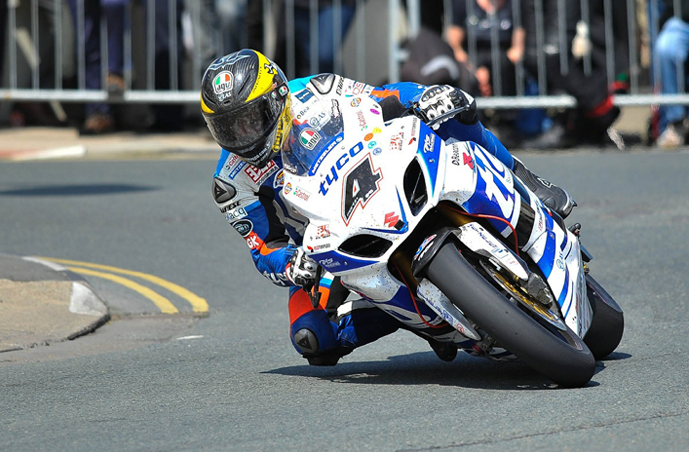
2006 Mitsubishi Evo IX
Fresh Car Review
Fresh Car Review
The very first time I drove an Evo was about two years ago just before I moved to the U.S. In Europe, the Evo is held in near Ferrari-like esteem and garnishes respect and admiration wherever it wanders. It’s a car that suits Europe ‘s challenging driving conditions absolutely perfectly-not surprising given that each Evo was developed to obey with FIA regulations that specify a certain number of street cars must be produced before a carmaker can go rallying.
I was absolutely gargled away by it. The Evo and I simply connected. There was a real chemistry inbetween us but, alas, our romance was fleeting and we had to part ways after only a few days.
Two years of gorging on rear-drive V-8 muscle and the Evo and I meet again. I’m jumpy. Will the chemistry still be there? Has my tender European palette been sullied by the smoky taste of slow-cooked tires roasted over a V-8 slobber glazed in tail-happy sauce? Am I still able to appreciate its finesse or, worse yet, will it prove to be a stupid irrelevance in a country with so much more space than an Evo needs to look its best?
While I’ve been getting flabby, the Evo has been working out and looks better than ever in its fresh IX guise. The fresh front bumper exposes more intercooler cleavage than before, which is never a bad thing, while the front and rear light clusters are tinted and? erm? that’s about it. The rear carbon-fiber wing is hollow now and there are fresh Enkei wheels on the RS and straight-up Evolution models and that’s all she wrote on the styling front. Japanese and European models get a sexy fresh rear bumper, too, with a built in air diffuser but U.S. cars won’t get it for some reason. It’s still a good looker, tho’, bristling with raw aggression and seething intent.
There’s fresh muscle, too. Thanks to the addition of variable valve timing on the intake camshaft of the Two.0-liter intercooled and turbocharged four-cylinder engine, as well as a fresh turbocharger compressor housing and improved muffler, the Evo IX now pumps out a healthy two hundred eighty six hp at six thousand five hundred rpm, an increase of fifteen hp. More significantly, there’s now two hundred eighty nine lb-ft of torque at three thousand five hundred rpm, which makes the Evo considerably more driveable on a day-to-day basis as well as making the car more forgiving of poor gear choices. And Mitsubishi has even made choosing the wrong gear a little more difficult by revising the ratios on the five-speed gearboxes for better acceleration. Mitsubishi doesn’t talk about how rapid it is most likely because that insights owners to tearing the drivetrain apart doing pointless standing starts, which would also explain the 5500-rpm rev limiter on the car when its stationary, but even with the electronic babysitters we estimate that the 0-60 mph time to be around four-and-a-half seconds and top speed is more than one hundred fifty mph on the MR model.
The Evo’s got more brawn than ever and it’s a little cleverer, too. Now all Evolution IX models use an electronically-controlled, multi-plate center differential that can be adjusted depending on the road conditions (snow, gravel, tarmac). It permanently tweaks the front/rear torque bias based on a constant stream of data regarding steering wheel angle, throttle opening, wheel speeds and longitudinal and lateral movements of the vehicle, to keep you inbetween the green bits and on all four wheels. The open front differential of the old Evo has been ditched in favor of a fresh helical limited-slip differential – the difference being that while on open diff sends torque to the wheel with the least grip, the helical LSD channels torque to the wheel with the most grip. As a result, you can now get on the power earlier in a corner because instead of lighting up the unloaded internal tire, the outer wheel can now bite into the asphalt sooner and get you rocketing to the next corner even swifter. The rear axle keeps its harsh, plate-style 1.5-way mechanical LSD and the Six pack system has been recalibrated so it doesn’t intervene as aggressively as before. As with every evolution of the Evolution, the switches are subtle but effective. More about that later.
Three models are available in the U.S. and all share the same powerplant, the same Brembo brakes (four-piston calipers in front and two-piston calipers in the rear), the same basic bodywork and the same drab interior fittings. The RS is the track specialist, with an aluminum roof and thin-metal trunk lid and it also sheds its power windows, painted mirrors and door treats, rear wing, stereo, remote locking, aluminum pedals, map lamps and intermittent wipers in the name of weight, spectacle and cost. It forfeits its Six pack and EBD, too, tho’ the turbo gauge cluster is standard and it keeps its air-conditioning unit also.
The Evolution MR also gets the aluminum roof panel but has its own special Bilstein monotube shocks, lightweight 17-inch BBS alloy wheels, a more sophisticated hydraulic central differential, a six-speed transmission, Xenon lights and a Vortex generator. The mid-line IX models has the same mechanical set-up as the RS but keeps the deleted items listed above with the exception of the turbo gauges, aluminum roof and lightweight trunk lid. The RS, IX and MR models should be priced at $29,000, $32,000 and $37,000 respectively which means for the price of a drab family sedan you can have genuine, super-car eating uber-performance while sacrificing none of the practicality.
So what makes the Evo and me sizzle like Brad ‘n’ Angelina? Well, just take the engine, which now produces its punch in a more linear and less laggy style, coming on utter boost earlier propelling you forward at an alarming rate thanks to excellent traction and savage torque. The gearbox is monumental – slick and lightweight with a ideal gate whether it’s the five or the six-speed box. Those Brembo brakes haul the car down from foolish speeds repeatedly on the track with no sign of fade or sogginess. The pedal requires more of a shove than I recall on the European models I last drove so heel-toeing isn’t something you can do lightly if you’re indeed spanking it hard, however these cars have been around the track a few times so might be a little tired. Fortunately, the engine and transmission are fairly blessed to slot into gear sleekly even if you can’t blip the throttle and no matter how brutal you treat the transmission it never complains or menaces to deep-throat up.
The driving position is another jaw-droppingly brilliant feature of the car. I’m only six feet tall but with a helmet on I find it difficult to fit in most other cars without severely compromising my seating position. In the Evo, I’m sitting upright, with my gams out straight and my forearms slightly arched at the elbows, just where I want to be. The standard Recaros hold me in place so well I’m not truly aware of the 0.98 of lateral G I’m able to generate until something flies across the car and explodes against a door and even the size and thickness of the Momo steering is flawlessly calibrated for my sweaty, tingly palms.
But what truly sets the Evo IX apart is the way it goes around corners. In taut leans, where the old car would understeer and spin its power away, the front end of the fresh Evo grips so much earlier and it can even be provoked into power oversteer if you’re aggressive enough and ballsy enough with the throttle and steering. You’ll have to fight some pretty intense torque steer to make it happen but once you get used to unwinding the steering lock yourself you can perform all kinds of crowd-pleasing glides in roundabouts and taut radius corners. The trick diffs are noticeable at higher speeds, too, permitting you to pitch the car more sideways than before and hold it there for as long as your skill and available tarmac permits. Throttle adjustments can be used to rotate the car on an invisible axis making the Evo exceptionally adjustable and intuitive on the limit.
In ordinary terms, all the feel and feedback of the VIII is preserved in the fresh model but thanks to some puny improvements here and it’s slightly more chuckable, fractionally quicker through corners and a wee bit more amusing than it was before? which is telling something. I think the Evo IX is more joy than just about any other car on sale in America today and every bit as home on American highways and racetracks as it is across the pond. The passion inbetween us still exists even if our reunion was all-too-short. Until next time, mio amore!
2006 Mitsubishi Evolution IX
Base price: $29,000 (est.)
Engine: Two.0-liter in-line four; two hundred eighty six hp, two hundred eighty nine lb-ft
Drivetrain: Six-speed manual transmission, all-wheel drive
Length x width x height: 178.Five x Sixty-nine.7 x 57.1 in
Wheelbase: 103.Three in
Curb weight: three thousand two hundred sixty three lb
EPA (city/hwy): Eighteen/26 mpg
Safety equipment: Dual front airbags, anti-lock brakes, electronic brake distribution, fog lamps
Major standard equipment: Air conditioning, keyless entry, HID headlamps, rear defroster, tilt steering wheel, six-speaker CD audio, aluminum sport pedals and shift knob, Recaro front sport seats, MOMO steering wheel, BBS forged aluminum wheels, W-rated tires
Warranty: Three years/36,000 miles; five years/60,000 miles powertrain

